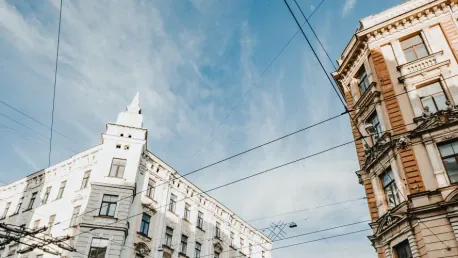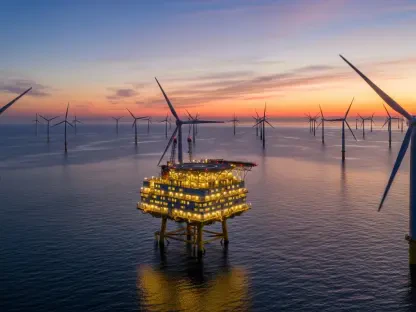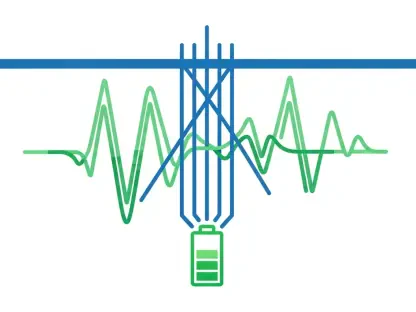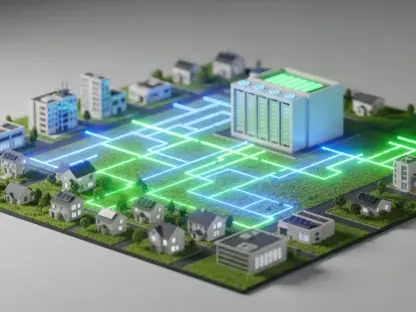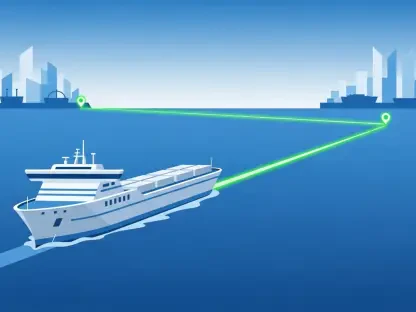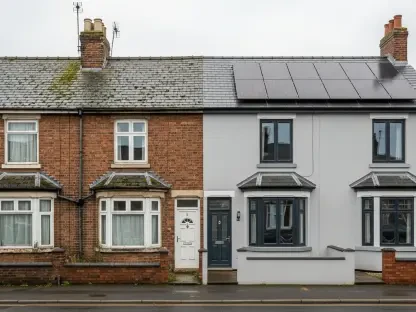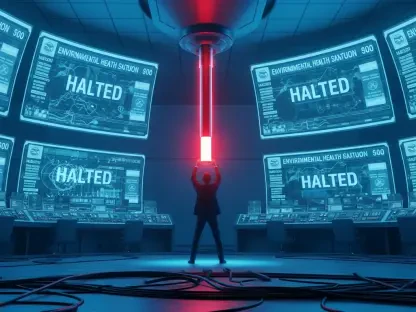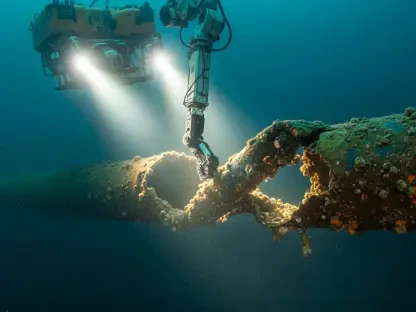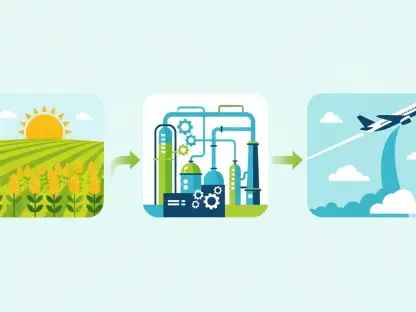The article titled “Balancing Historic Preservation with Modern Energy Efficiency Standards” explores the intricate relationship between conserving historic buildings and meeting contemporary energy efficiency demands. As the United States grapples with preserving its architectural legacy while promoting sustainability, this discussion delves into the challenges and solutions for maintaining the historical integrity of these structures without compromising on modern energy needs.
The Importance of Historical Integrity
Understanding Historic Materials and Design
Historic buildings often feature unique materials like hand-crafted woodwork, masonry, and decorative ironwork that define their character. Preserving these elements is crucial, as they represent the cultural and historical significance of the era in which they were built. These distinctive features not only embody the craftsmanship and architectural styles of their time but also convey the cultural and social narratives of past generations. The value of maintaining such authenticity cannot be overstated, as it connects us to our history and fosters a sense of identity and continuity within communities.
However, preserving historic materials poses unique challenges, especially when coupled with the necessity of incorporating energy-efficient upgrades. Many historic structures were constructed using techniques and materials that are no longer in common use today. This often results in a delicate balancing act between conserving original elements and implementing modern technologies designed to reduce energy consumption. Architects and conservationists must meticulously evaluate each retrofit project to ensure that necessary upgrades do not undermine the historical integrity of these properties.
Challenges of Modern Energy Retrofits
Upgrading historic buildings to meet current energy standards poses significant challenges. The structural nuances of older buildings can complicate the integration of modern systems, and there is a risk of damaging original materials during retrofits. As these buildings were not initially designed with contemporary energy requirements in mind, integrating high-performance insulation, double-glazed windows, and advanced HVAC systems often requires creative and sensitive approaches. Retrofitting projects must consider the potential impact on original architectural features, while also establishing a balance between improvement and preservation.
Moreover, the regulatory landscape adds another layer of complexity to these endeavors. Historic buildings are often subject to stringent preservation guidelines that mandate the maintenance of their original appearance and materials. This can limit the types of modifications that can be made and the techniques that can be employed. Navigating these regulations while striving to enhance energy efficiency requires considerable expertise and cooperation among various stakeholders, including architects, engineers, preservationists, and policymakers.
Economic and Structural Complexities
Financial Barriers
The cost of upgrading historic buildings to modern energy standards can be prohibitive. Property owners may be reluctant to pursue energy retrofits due to the high expenses and regulatory complexities involved. Historic buildings often need specialized materials and labor, which can drive up costs significantly. In addition, extensive renovations to meet energy efficiency standards might require property owners to comply with other contemporary codes, further increasing expenses. The financial burden of such projects can be daunting, especially for owners of smaller historic properties with limited budgets.
Funding and financial incentives thus play a crucial role in facilitating energy efficiency upgrades in historic buildings. While federal programs like the Historic Tax Credit can provide substantial financial relief, state and local governments must also step in with grants and subsidies to support these endeavors. Without these financial mechanisms, many historic buildings may fail to achieve necessary energy efficiency improvements, leading to higher operational costs and continued reliance on outdated, inefficient energy systems, ultimately undermining urban sustainability goals.
Structural Challenges
Historic buildings often contain architectural features that make it difficult to implement modern energy-efficient systems. This includes integrating high-performance insulation, double-glazed windows, and advanced HVAC systems without compromising the building’s integrity. The intricacies of historic construction, such as thick masonry walls, ornate detailing, and period-specific design attributes, require bespoke solutions tailored to the unique needs of each building. These complexities necessitate detailed assessments and innovative approaches to ensure energy retrofits do not detract from the building’s historical significance.
For instance, retrofitting energy-efficient windows in a historic structure must account for both aesthetic and functional aspects. Modern double-glazed windows can significantly reduce energy loss but may alter the appearance of the building’s façade. Alternative solutions such as interior storm windows or customized glazing that matches the original aesthetic can be employed to navigate these challenges. Similarly, installing advanced HVAC systems may necessitate non-intrusive methods that preserve existing fabric and surfaces while enhancing overall energy performance.
Urban Sustainability and Historic Buildings
Energy Consumption in Historic Structures
Many historic buildings were not designed with modern energy efficiency in mind, leading to inefficient energy use. This is particularly problematic in cities with a high concentration of historic properties, where these buildings can significantly impact urban sustainability efforts. The substantial energy demands of these older structures, combined with inefficiencies in their systems, contribute to higher carbon footprints and increased operational costs. Addressing these inefficiencies is critical for achieving broader environmental goals and reducing the overall energy consumption within urban areas.
Some historic buildings were initially designed with passive climate control strategies, such as thick walls, high ceilings, and cross-ventilation, which can contribute to energy efficiency. However, these features are often insufficient to meet contemporary energy standards and comfort levels. Modern interventions that complement these historic strategies can enhance overall efficiency without compromising the building’s character. For example, careful placement of additional insulation or the use of energy-efficient lighting that mimics historic fixtures can result in significant energy savings while maintaining the building’s aesthetic integrity.
Local Government Initiatives
In response to these challenges, local governments are increasingly holding historic buildings accountable for their energy performance. Policies like New York City’s Local Law 97 impose emissions caps on large buildings, including historic structures, reflecting a broader trend towards sustainability. These regulations aim to reduce the environmental impact of buildings by mandating stricter energy performance standards and promoting the use of cleaner, more efficient technologies. Such policies signify an important shift in the regulatory landscape, where historic buildings are no longer granted blanket exemptions but are integrated into wider sustainability frameworks.
Additionally, many cities are implementing energy benchmarking and performance reporting requirements for historic structures. These mandates help track energy consumption, identify inefficiencies, and set performance targets. By requiring historic buildings to measure and report their energy use, local governments can better understand the energy profiles of these properties and develop targeted strategies for improvement. These initiatives also encourage property owners to take proactive steps towards energy efficiency, supported by technical assistance, incentives, and educational programs designed to facilitate sustainable retrofits.
Technological Advancements and Financial Incentives
Innovative Retrofit Solutions
Technological advancements are making it possible to retrofit historic buildings without compromising their unique features. Adaptive reuse projects can integrate sustainability measures while preserving historical materials. Emerging technologies, such as advanced insulation materials, energy-efficient HVAC systems, and smart building controls, offer innovative solutions that respect the historical authenticity of buildings. These advancements enable the implementation of energy-efficient measures that are less invasive and more compatible with the unique architectural characteristics of historic structures.
For instance, technologies like aerogel insulation, which offers high thermal performance with minimal thickness, can be used in spaces where traditional insulation would be obtrusive. Similarly, state-of-the-art HVAC systems with compact designs can be integrated into historic buildings with minimal impact on existing structures. Smart building controls, which optimize energy use through real-time monitoring and adaptive algorithms, can also contribute to significant energy savings without altering the building’s appearance. These innovative solutions highlight the potential for modern technology to enhance energy efficiency while preserving the historical integrity of treasured buildings.
Financial Support for Sustainable Retrofits
Financial incentives, such as the federal Historic Tax Credit program and state-level energy efficiency grants, are essential in encouraging property owners to pursue sustainable retrofits. These programs help mitigate the economic barriers to upgrading historic buildings. The Historic Tax Credit, for example, provides a 20% credit on qualified rehabilitation expenditures for income-producing historic properties, making it one of the most effective tools for stimulating investment in historic preservation. By offsetting a portion of the costs associated with energy retrofits, this credit makes it more financially viable for property owners to undertake such projects.
At the state and local levels, additional grants and subsidies for energy efficiency improvements can further incentivize property owners. Programs that offer low-interest loans, rebates for energy-efficient technologies, and technical assistance for project planning and implementation are all instrumental in promoting sustainable retrofits. These financial support mechanisms not only reduce the initial cost burden but also enhance the long-term economic viability of historic properties by lowering energy expenses and increasing property values. By leveraging these resources, property owners can achieve the dual goals of preservation and sustainability.
Case Studies of Successful Retrofits
Notable Examples
The article highlights successful energy retrofits in historic buildings, such as the Ford Foundation Headquarters in New York. These projects demonstrate that it is possible to preserve historical legacy while meeting modern energy standards. The Ford Foundation’s renovation, for instance, involved upgrading the building’s HVAC systems, installing energy-efficient lighting, and enhancing thermal insulation, all while maintaining the iconic elements of the original design. This renovation has not only improved the building’s energy performance but also preserved its architectural significance, showcasing a model for future retrofitting projects.
Other notable examples include various historic courthouses across the Midwest, which have undergone comprehensive energy upgrades. These projects incorporated innovative solutions such as geothermal heating and cooling systems, solar panels, and energy-efficient windows. Through careful planning and collaboration among architects, engineers, and preservationists, these retrofits achieved substantial energy savings while maintaining the historical integrity of the courthouses. These examples serve as proof that with the right approach, historic buildings can successfully navigate the path towards sustainability.
Innovative Approaches
These case studies showcase how architects and engineers can think creatively to balance preservation with energy efficiency. The unique constraints of historic buildings often lead to significant advancements in material science and sustainable architecture. For instance, the development of historically sensitive materials that mimic the appearance and function of original components while offering improved energy performance is a direct response to the challenges posed by retrofitting. Innovations in window technology, insulation materials, and HVAC systems cater specifically to the needs of historic properties, providing customized solutions that enhance efficiency without compromising heritage.
Moreover, interdisciplinary collaboration is key to the success of these projects. By bringing together experts from various fields, including architecture, engineering, and historic preservation, retrofitting teams can devise holistic solutions that address both energy performance and historical integrity. This collaborative approach fosters innovation and ensures that all aspects of the building’s character are considered and respected. Ultimately, these efforts demonstrate that historic preservation and modern energy efficiency are not mutually exclusive goals but can be harmoniously integrated to achieve sustainable heritage conservation.
Performance-Based Energy Codes
Flexible Regulations
Experts advocate for performance-based energy codes tailored to historic buildings. Such codes would allow for customized solutions that enhance energy efficiency while respecting the building’s unique characteristics. Unlike prescriptive codes that mandate specific methods or technologies, performance-based codes set overall energy performance targets, giving property owners the flexibility to choose the most appropriate solutions for their buildings. This approach recognizes the diversity of historic structures and encourages innovative strategies that balance energy efficiency with preservation.
By adopting performance-based energy codes, policymakers can create a more adaptable regulatory framework that accommodates the distinct challenges of retrofitting historic buildings. These codes can be tailored to address the specific needs and constraints of each property, allowing for greater creativity and problem-solving in the retrofit process. Furthermore, performance-based codes can evolve with advancements in technology and best practices, ensuring that historic buildings remain both energy-efficient and historically significant in the long term.
Collaboration for Solutions
The article titled “Balancing Historic Preservation with Modern Energy Efficiency Standards” delves into the complex relationship between conserving historic buildings and fulfilling contemporary energy efficiency requirements. In the United States, there’s an ongoing struggle to protect its architectural heritage while also embracing sustainability. This discussion highlights the challenges of preserving the historical integrity of these structures without sacrificing their energy efficiency. It examines various solutions, aiming to harmonize the need for conservation with the imperatives of modern energy standards. Efforts include using energy-efficient materials that don’t alter the building’s historic appearance, implementing advanced HVAC systems that are minimally invasive, and promoting regulations that balance preservation with environmental responsibility. This article is a testament to the importance of finding innovative approaches that honor the past while looking forward to a sustainable future. Balancing these aspects is crucial, not only for preserving our history but also for ensuring a greener world for future generations.
